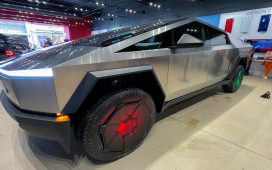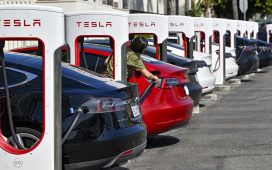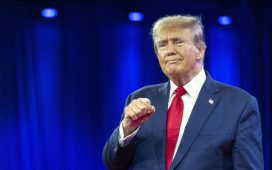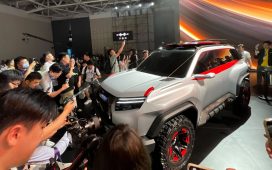Tesla Chief Executive Elon Musk stands on the podium as he attends a forum on startups in Hong Kong, China.
Bobby Yip | Reuters
Tesla’s stock has cratered after posting a big second-quarter loss, despite word that revenue, production and deliveries all had hit all-time records.
Tesla has a history of riding a roller coaster when it comes to its stock price, and sharp downturns have frequently been followed by equally aggressive surges. But despite an upbeat forecast by CEO Elon Musk for the second half of 2019, the battery-carmaker appears to be facing far more serious scrutiny going forward.
For his part, Musk tried to put a positive spin on its $408 million second-quarter net loss, telling reporters and analysts on a conference call that, “We expect to be breakeven this (third) quarter and profitable next quarter,” while also promising that Tesla will “be cash flow positive going forward, with the exception of quarters when we introduce a new product.”
There are a number of new products coming, including the Model Y sport utility vehicle, a second-generation Roadster, an all-electric pickup and a battery-powered semi-truck. But the question is whether those really can deliver not only the revenue, but the margins that analysts and investors are expecting.
Clearly, the second quarter wasn’t all bad. It produced a record 87,048 electric vehicles during the three-month run, while delivering an all-time-high 95,356. Yet it still managed to lose money.
“Tesla hitting a sales record is not a surprise considering shoppers were scrambling to take advantage of the waning tax credit,” said Jessica Caldwell, the chief analyst with auto tracking service Edmunds.
Until Jan. 1, 2019, buyers could expect to receive a $7,500 federal credit, but after that date it was halved to $3,750. Then halved again beginning on July 1 through the end of the year to $1,875. The lower tax credits could weaken demand during the coming months, and it will be eliminated entirely on the first of next year.
“Also, Tesla may have a reputation as an innovator but to boost sales they stole a page from the traditional automaker playbook by lowering prices and making buying easier with a leasing program,” Caldwell said. Both moves together work against the big jump in margins that Musk has repeatedly promised.
Compounding Tesla’s challenges, it is finally beginning to face some real competition. There’s not only the little Chevrolet Bolt EV and Jaguar I-Pace, but the new Audi e-tron and the latest and longest-range version of the Nissan Leaf, which finally comes closer to matching what Tesla products like the Model 3 can deliver. And a broad assortment of additional competitors will start entering the market over the coming 12 to 24 months, including Porsche, Volvo, Mercedes-Benz and Volkswagen, among others.
The good news for Tesla is that the U.S. battery-car market is continuing to expand, and some analysts believe that it could absorb all the newcomers without putting a squeeze on the California upstart.
Perhaps a bigger test, however, will come around the end of the year, as Tesla finishes up its new assembly plant in Shanghai. Until now, it has found it difficult to crack the world’s largest market for plug-in vehicles, and the Trump administration’s trade war will only compound the situation. The new factory will allow it to largely sidestep that issue.
But the factory will open at a time when the overall Chinese car market has experienced a rare slowdown after two decades of annual double-digit growth. Thanks to strict new regulations enacted in late 2017 by Beijing, sales of battery-cars have largely defied the downturn — but the pace is slowing. EV sales surged 126% in 2018, according to the China Association of Automobile Manufacturers, but that is down to barely 2% in recent months, the trade group reported.
Add up all the challenges facing Tesla and the mood among analysts and investors is clearly sounding more bullish in the wake of Wednesday’s unexpectedly deep loss – the second quarter in a row that the carmaker fell short of the consensus forecast, according to Refinitiv.
“We do not believe the next two quarters revenue will grow either from second-quarter levels or on a year-on-year basis,” RBC analyst Joseph Spak wrote investors after the earnings announcement. “In fact, we don’t see revenue returning to near second-quarter levels until the third quarter of 2020. So growth is likely to be on hiatus and we don’t believe the valuation reflects this.”
Tesla shares hit a peak for the year of $347.31 on Jan. 17 – and a 52-week high of $387.46 last August. While shares have clearly rebounded from the lows set in mid-June, when the stock tumbled to a 52-week low of $176.99, the numbers have fallen below $230 in trading Thursday. But Spak expects shares could sink to $190.
“Tesla took a step in the right direction with a strong delivery number on Model 3 success, however the soft gross margin profile will be a gut punch to the bulls hoping for much needed good news on this front,” said Daniel Ives, an analyst with Wedbush.
Tesla has had a history of delivering surprises, as it did with two consecutive quarterly profits during the second half of 2018. But despite CEO Musk’s upbeat predictions, it’s hard to find many observers now willing to believe he has another rabbit hidden in his hat ready to make its surprise appearance in the quarters to come.








